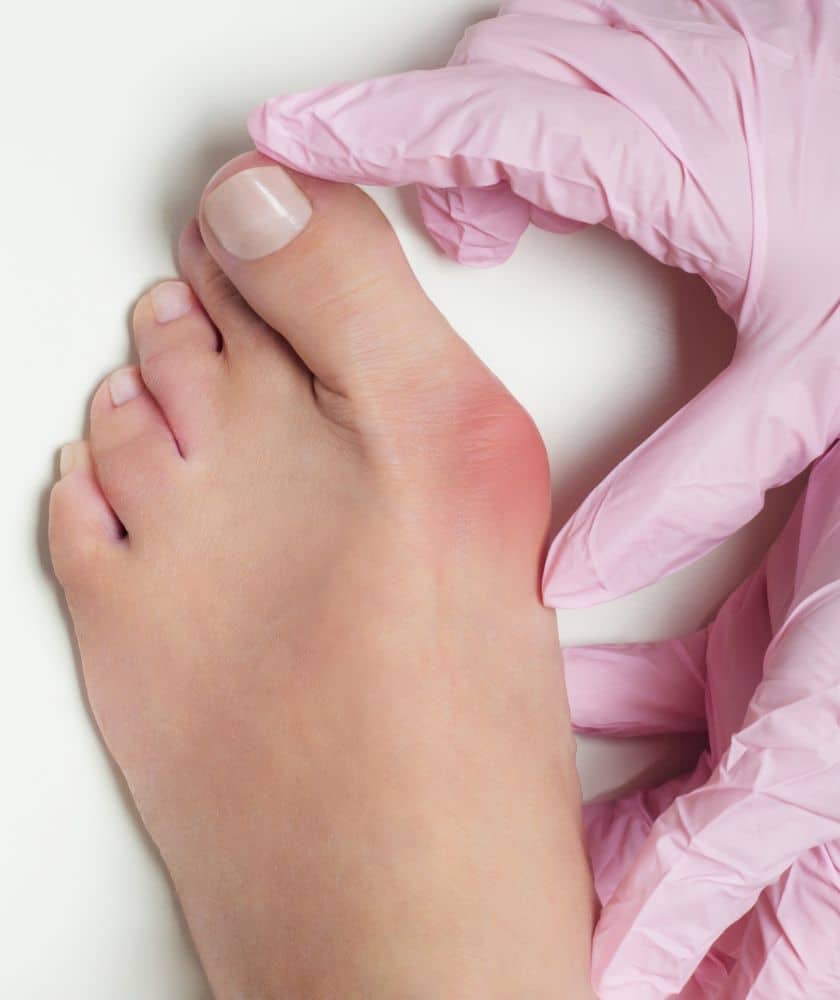BUNIONS
Step Towards Comfort

What is Bunions ?
Bunions or “Hallux Abducto-Valgus” are most often characterized by a large bump on the side of the joint at the base of the big toe. It is caused by a bone or tissue enlargement at the big toe joint that can turn the big toe in towards the 2nd toe. The joint and surrounding tissue may be tender or swollen. This can cause osteoarthritis if its not attended to early. This can be a congenital condition or in most women it is caused by wearing high heeled pointed shoes, or poor fitting shoes. These people with flat feet tend to have bunions as well. Bunion pain can be treated by custom foot orthotics or orthopedic footwear with modifications done to the forefoot soles of the shoe to offload the pressure at the big toe, we can also do custom made toe separators to straighten the big toe as well. Gait Maxx Pedorthist are specialists in foot orthotics and footwear. Call us to book an appointment today or fill our online appointment request form.
More About Bunions
The exact cause of bunions is not always clear, but they often develop due to a combination of genetic factors and certain lifestyle choices or footwear. Some common contributing factors to bunions include:
-
Genetics: Bunions tend to run in families, suggesting a genetic predisposition to the condition.
-
Footwear: Wearing tight, narrow, or high-heeled shoes can put pressure on the toes and contribute to the development of bunions.
-
Foot Structure: Certain foot structures, such as flat feet or abnormal bone alignment, can increase the risk of developing bunions.
-
Medical Conditions: Some medical conditions, like arthritis, can lead to joint deformities, including bunions.
-
Injury or Trauma: In some cases, an injury or trauma to the foot can trigger the development of a bunion.
The symptoms of bunions may include:
- Pain and tenderness at the base of the big toe.
- Redness and inflammation around the affected joint.
- Restricted movement of the big toe.
- Corns or calluses developing on the bump or between the toes.
- Changes in the alignment of the other toes, potentially leading to hammer toes.
Treatment options for bunions depend on the severity of the condition. Conservative approaches may include wearing wider, more comfortable shoes, using padding or orthotic devices to reduce pressure, and taking over-the-counter pain relievers. Physical therapy and exercises to improve toe alignment and joint mobility may also be recommended.
In more severe cases or when conservative treatments do not provide relief, surgery may be considered. Bunion surgery, known as a bunionectomy, involves realigning the bones and removing the bony bump. The specific type of surgery will depend on the individual’s condition and the surgeon’s recommendations.
It’s important to consult a healthcare professional, such as a podiatrist, skilled foot care specialists, family doctor, MD, or orthopedic surgeon, if you suspect you have a bunion or if you are experiencing foot pain or discomfort, as early intervention can help prevent the condition from worsening.
